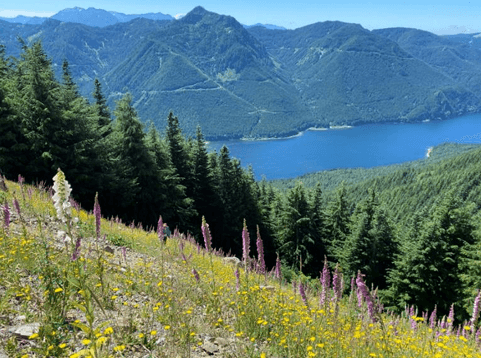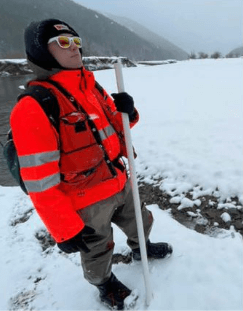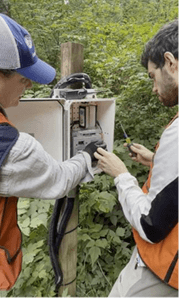 SPU helps control hawkweed (a regulated noxious weed) in the South Fork Tolt River Watershed, promoting a healthy habitat.
SPU helps control hawkweed (a regulated noxious weed) in the South Fork Tolt River Watershed, promoting a healthy habitat. Every day is “Earth Day” for the scientists and environmental professionals who spend their days working on a variety of projects throughout the Cedar River and South Fork Tolt River Municipal Watersheds. Their goal is to protect water quality and enhance forested and aquatic habitats – one of many investments that Seattle Public Utilities (SPU) is making to safeguard our planet now and into the future.

The Natural Resources Section (NRS) in the Watershed Management Division at SPU is a small group made up of specialists with a wide array of expertise including forest and restoration ecology, fish and wildlife biology, and hydrology. Their work takes place in the landscape surrounding the region’s drinking water reservoirs in the Cascade Mountains. This area is a natural filter, and the healthier it is, the better it is at protecting water quality.
The NRS team is responsible for implementing forest habitat restoration programs, which improves biological diversity, increases resilience to disturbance, and facilitates old-growth forest habitat development. NRS staff also remove noxious weeds from the landscape, which can threaten native plant community structure in the forests. In addition to forest restoration, NRS is responsible for implementing hydrology programs in the watersheds. The hydrology program restores and enhances natural stream processes to protect and improve water quality and support healthy fish populations.

Cedar River and South Fork Tolt River Watersheds are home to many fish and wildlife species, and NRS staff work to enhance their habitat and conduct surveys for a variety of sensitive species. This includes species in the aquatic realm (e.g., bull trout, pygmy whitefish, common loon) and in the forests (e.g., northern spotted owl, marbled murrelet, northern goshawk). In the face of a changing climate, the NRS staff are working at the frontlines monitoring environmental changes and building environmental resilience.
As we close out Earth Month 2023, we celebrate the work of SPU staff at the watersheds and throughout our region who are working every day at the forefront to protect our most precious resources and take action against climate change.
